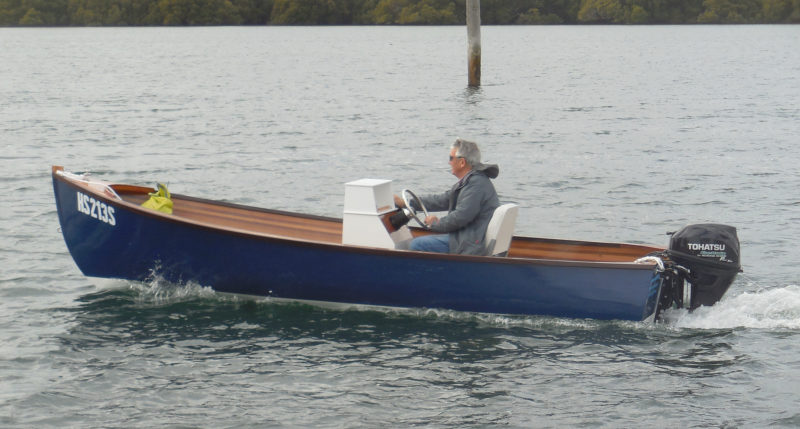 Nick Williams
Nick WilliamsAlthough EMZARA didn’t wind up with the concave bottom section that makes the Jericho Bay Lobster Skiff distinctive, she still gets up on a plane quickly. The intentionally hogged bottom is more of an advantage for a tiller-steered outboard where there is a lot of weight in the stern.
John Adamson visited the WoodenBoat campus in the fall of 2009 and was taken by two Jericho Bay Lobster Skiffs: the original plank-on-frame version built by Jimmy Steele in the early 1970s, sitting on a trailer parked in front of the WoodenBoat Store, and a strip-planked version built by Tom Hill, at anchor near the WoodenBoat boathouse. The skiff has an unusual feature: a hogged bottom. This concavity in the aft half of the hull, usually associated with old boats that have been improperly supported in storage, serves the same purpose as trim tabs, creating lift at the stern and keeping the bow down.
When John retired a few years later, he found himself with some extra time on his hands. He had enjoyed doing woodworking in the past and was ready to take on the challenges that boatbuilding provides. Living a dozen miles down the South Australia coast from Adelaide in Port Wilunga, he has the St. Vincent Gulf at his doorstep and the River Murray beyond his back yard, so he’d have lots of waterways to explore.
The memory of the Jericho Bay Lobster Skiff was still with him, and he purchased plans from The WoodenBoat Store. When the plans arrived, he got to work. To mill the strips for the hull, John had the good fortune to have a friend with a well-equipped cabinet shop where he could mill western red cedar into ninety 1″ x 1/2″ cove-and-bead strips for the hull and Douglas-fir into laminates for the stem.
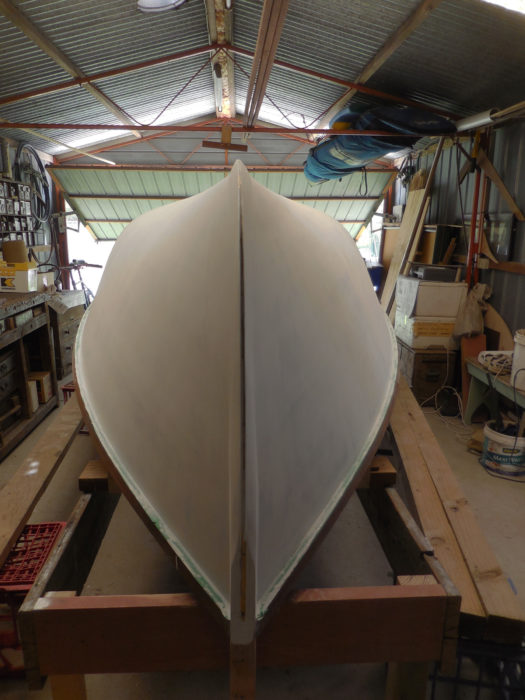 John Adamson
John AdamsonThe strip-built skiff is lighter than its lapstrake predecessor and the interior, without laps and frames, is just as smooth as the exterior and easier to finish and maintain.
He made molds from the full-sized patterns, and when he had them set up on the strongback, the unusual and intentional reverse curve in the bottom became apparent.
Whenever John found himself mulling over some part of the construction that he was unsure about, he posed his questions to the WoodenBoat Forum. Several forum members—“WildBill,” “MichelW,” and “Woodpile,” among them—had built Jericho skiffs using the same plans and were happy to give John the benefit of their experience. “Woodpile” even sent his drawings for the center console that John would eventually install in his boat. Tom Hill’s two-part article on the construction of the Jericho Bay Skiff in WoodenBoat Nos. 210 and 211 also helped point the way.
John used WEST System epoxy to join the strips, laminate the stem, and build up four thicknesses of 1/2” marine plywood for the transom. The planking went well, but when he removed the planked hull from the molds, the hog in the bottom all but disappeared. He realized too late that he should have preserved the reverse curve by installing the keel before releasing the hull from the strongback.
 John Adamson
John AdamsonTom Hill writes about the skiff: “Her high, full, and flared bow makes for a surprisingly dry ride to windward in a chop. Running downwind, her gentle stem curve, moderate deadrise, and round bilges make her forgiving and steady.”
After ’glassing the hull inside and out, he used jarrah, a species of eucalyptus common in Western Australia, for the inwales and outwales. The strips of ramin that grace the inboard face of the breasthook were cut from a slat of a Venetian blind he found lying on the side of a road—John’s father had taught him the importance of picking up anything that might be useful someday. He finished the interior bright with a two-part polyurethane varnish and painted the exterior with marine alkyd enamel—Oxford blue with a white boottop.
John bought a 20-hp Tohatsu four-stroke outboard to power his skiff. A hydraulic steering system took to the routing from the center console to the outboard without the wide curves that a cable system requires.
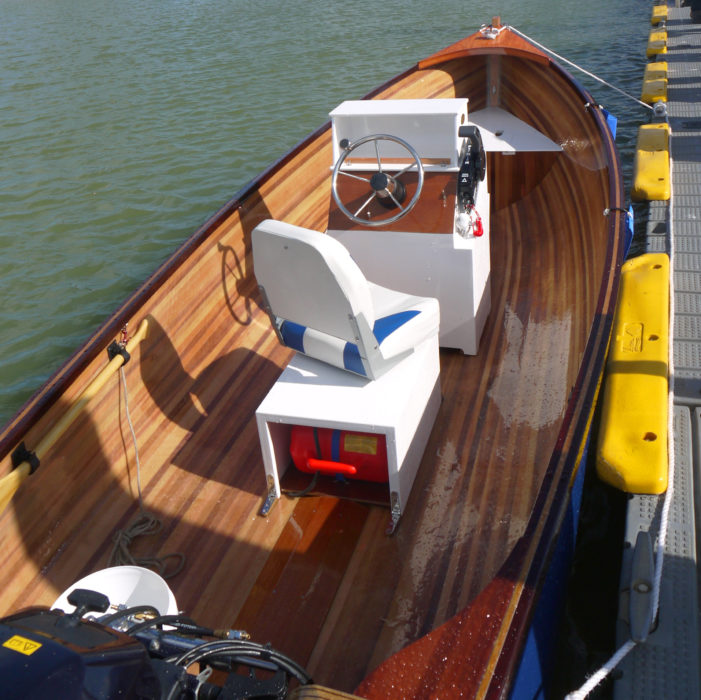 John Adamson
John AdamsonThe fuel tank is secured under the seat to keep its weight out of the stern. The fuel and hydraulic steering lines are under a narrow cockpit sole, out of sight and out from underfoot.
John christened his skiff EMZARA. One his friends had taken to calling him Noah during the construction of the boat; Emzara was Noah’s wife. In the summer months—January to March in Australia—John fishes for squid, taking great pains to keep his catch from ink-staining the bright-finished interior. Later in the year, during the antipodal autumn, EMZARA takes to the lakes of the River Murray and the islands of Lake Alexandrina at the river’s mouth. Finnis River and Currency Creek both have deltas where they join the lower reaches of the River Murray. There in the safe haven of reeds and bulrushes, John finds black swans, pelicans, ducks, shags (cormorants), waterhens (coots), egrets, ibis, terns, snipe, bitterns, stilts, seagulls, and a myriad of small insect-eating birds.
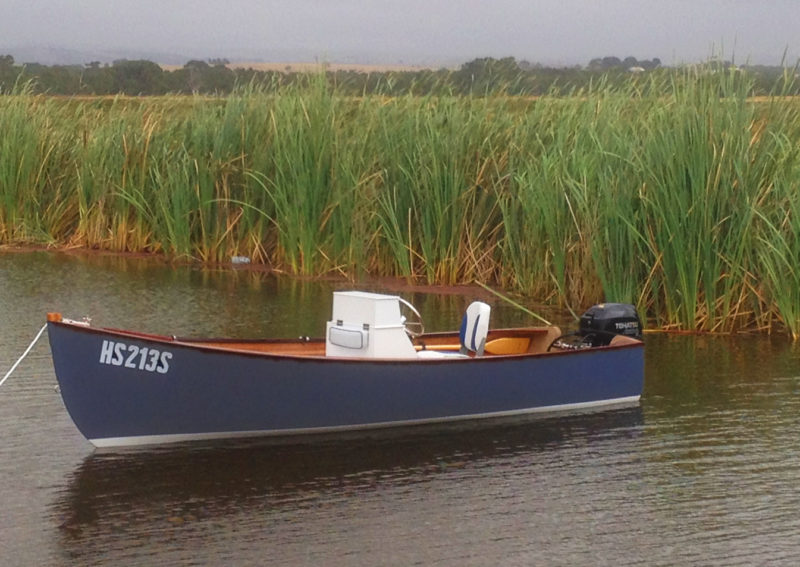 John Adamson
John AdamsonEMZARA often explores the lower reaches of the River Murray in South Australia.
Like many who own small wooden boats, John laments that “there seem to be too many distractions that keep me off the water, but one is always optimistic.”![]()
Have you recently launched a boat? Please email us. We’d like to hear about it and share your story with other Small Boats Monthly readers.
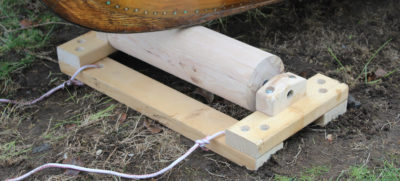
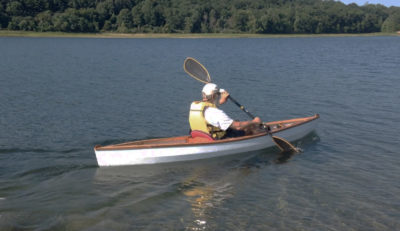
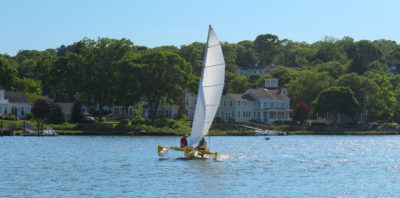
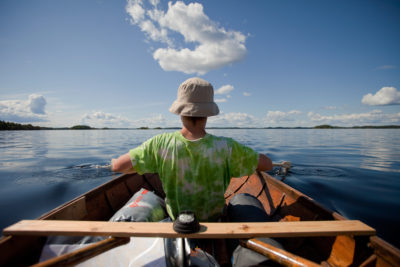
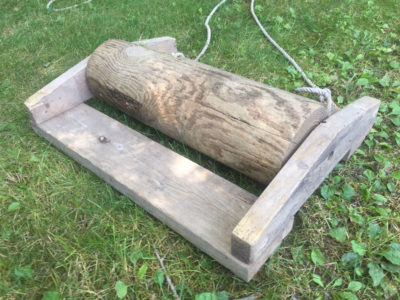
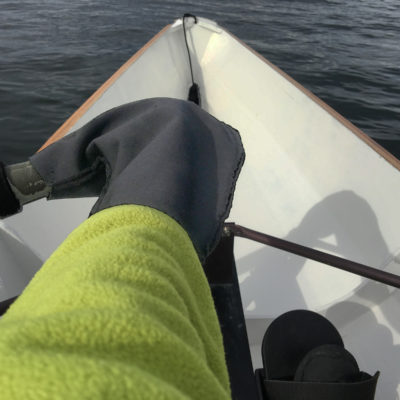
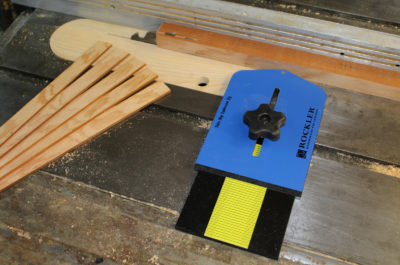
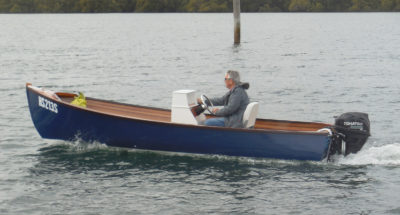
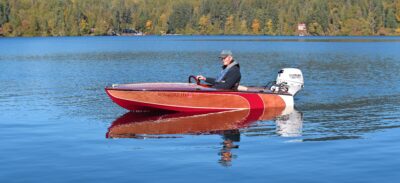
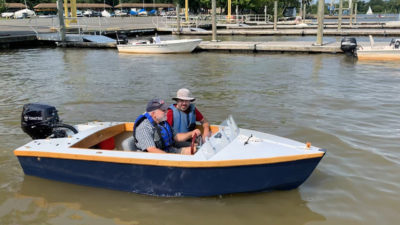
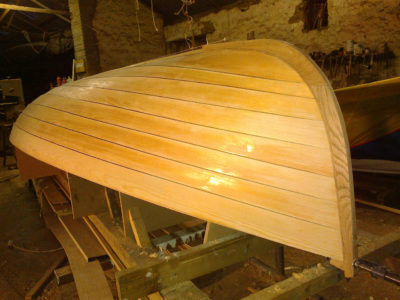
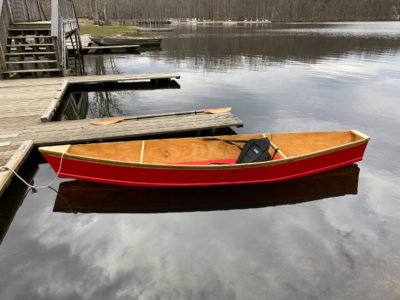
Very nice. I’m currently building the Jericho Bay skiff in Sydney for much the same purpose. I like your centre counsel arrangement. I struggled with keeping the hogging. My boating experience has always been concerned with concave bottoms as they tend to porpoise. That said, I kept most of it, albeit it is not a nearly as deep as the plans required.
A grand effort in retirement. A stable, well-proportioned boat suitable for closed water and sea conditions. John should be justifiably proud of his achievement with this wonderful-looking wooden boat.